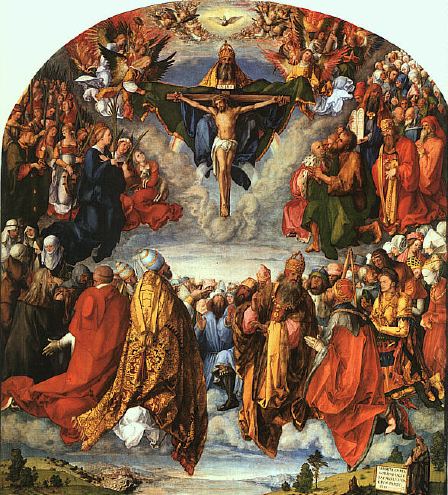Here’s the last bit of the “affective devotion” chapter draft for Getting Medieval with C S Lewis:
Reclaiming the physical
Finally, among the varied aspects of our human nature, our emotions seem especially closely tied with our physical bodies. We use the same words, “feeling” or “being touched,” for the physical senses and for emotional experiences. But reading Margery Kempe’s Book makes me ask: Where has the sense of the spiritual importance of touch or physicality gone in today’s culture? Are these human senses now allowed to communicate anything true or spiritual to us? We have plenty of the visual in our TV- and movie-soaked culture, and even in our churches. But how often do we experience anything spiritually significant through touch? The most intense, ecstatic touch-experiences, those of our sexuality, have been devalued and dehumanized through obsessive attention and being made into the commodities of the impersonal marketplace. I think that like Mel Gibson’s The Passion of the Christ, Margery’s life of devotion and the whole English mystical tradition can help to draw today’s Christians back to the sort of visible, physical devotion epitomized in the medieval pilgrimage.
In the mid-90s I was giving a lecture on Pentecostalism at an evangelical seminary in New England. I was describing the huge influxes of eager believers, every day, by the busload, to the Azusa Street Revival that launched Pentecostalism in 1906, and again to the modern Toronto Airport Vineyard revival and the Brownsville/Pensacola revivals One student put up his hand and asked, with skepticism in his voice: “Why do Pentecostals and charismatics feel that it’s so important to actually go to the place where a revival is supposedly happening, to ‘bring back’ that revival to their home churches?”
At the time, I didn’t have an answer. Now, having encountered figures like Margery Kempe and studied their time, it seems to me that these trips to modern charismatic revivals resonate with medieval pilgrimages. More than this, theologically speaking, people have always gone to places where God is reputed to be moving in a special way because they recognize the essentially personal, visual, physical nature of this historic faith of Christianity. That is, they see that the God who incarnated himself in history as the first-century Jew Jesus, continues to make himself incarnate, though imperfectly, in the body of Christ—which is his people, his “living stones” (a very tactile image), wherever he chooses to build them together.
Many of us may not venerate saints or go on pilgrimages to seek out their relics (which were the focal point of many medieval pilgrimages), but we do crave the kind of contact with Christ that comes to us in special gatherings of his people—his body—where he seems to be doing special things uniquely “for our time and place.” That we can come away from those gatherings changed reflects the fact that the church is the continued incarnation of Christ.
Of course, we will only consider the “coolness” of much modern devotion a problem if we agree that our emotions and desires should come into play in our faith life. If we do, then we find ourselves in the camp of Augustine and the “Christian eudaemonists,” who find in emotions of joy and fulfillment an important clue to our telos or ultimate purpose in God.
Other sorts of emotion do tend to show up in our churches: whipped up, self-centered, spiritually and morally useless. But in Kempe we meet a different sort of religious emotion, rooted in a “full boisterous” acceptance of Jesus’ real human nature. Her spirituality sprang from a theology that bled to death before her eyes. It drove her not only to strong feelings, but also to strong spiritual action. If only we could come to the same balanced, physical/emotional/cognitive devotion to the three-person God and the two-nature Christ. For the help toward that goal that Margery gave many in her own time, I would say she is still well worth reading today.
Kempe, Rolle, and the rest of the medieval affective devotional tradition teach us to approach Christianity as whole persons, bodily and emotional as well as intellectual. It is a lesson worth (re-)learning.
Related articles
- Seeing His humanity and worshiping with all of ours – hearts and bodies included (gratefultothedead.wordpress.com)
- The heart of medieval heart religion: Devotion to the Passion of Christ (gratefultothedead.wordpress.com)
- “Sexy devotion” – C S Lewis, Margery Kempe, and the mystics’ erotic language of intimacy with Christ (gratefultothedead.wordpress.com)
- The roots of heart religion – The English affective tradition (gratefultothedead.wordpress.com)

 Medieval Wisdom for Modern Christians
Medieval Wisdom for Modern Christians






